ITU-T G.8032 / ERPS

Overview of the G.8032/ERPS Standard
G.8032/ERPS (Ethernet Ring Protection Switching) is a standardized protocol developed by the International Telecommunication Union Telecommunication Standardization Sector (ITU-T), designed to provide a fast and reliable protection switching mechanism for Layer 2 Ethernet ring topologies. In the event of a link or node failure, ERPS ensures seamless failover to a backup path within 50 milliseconds, maintaining uninterrupted data transmission and ensuring continuous network service availability.
ERPS utilizes the R-APS (Ring Automatic Protection Switching) protocol to continuously monitor the status of the network and manage the switching process. The integration of the RPL (Ring Protection Link) mechanism effectively prevents network loops and broadcast storms, thus enhancing overall network stability. This design guarantees smooth data transmission by enabling rapid failover to a backup path whenever required.
The operation of G.8032/ERPS is driven by continuous monitoring of both network nodes and link status. Upon detecting a failure in the primary link, the system immediately activates a predefined backup path, ensuring that data flow remains uninterrupted. While recovery time may vary depending on factors such as network size and R-APS packet processing volume, the typical switching time is under 50 milliseconds, with a standard range of 10 to 500 milliseconds.
For applications demanding high availability and real-time recovery, such as industrial automation, smart transportation, and enterprise backbone networks, G.8032/ERPS delivers an efficient, cost-effective, and easily deployable ring network redundancy solution.
Technical Concepts and Topology Architecture
The design of ERPS is built on high availability and rapid recovery capabilities within a ring network topology. Its operational mechanism is based on the ITU-T G.8032 standard, leveraging protocol message exchange and topology control strategies to enable real-time fault detection and automatic network recovery. Additionally, ERPS supports a variety of ring network architectures, offering flexible solutions for complex network designs.
Protocol and Mechanism
ERPS utilizes a dedicated protocol message (R-APS) for real-time network status communication, including message types such as Signal Fail (SF), No Request (NR), and RPL Blocked (RB). When any link within the ring network experiences a failure, ERPS immediately marks the link as faulty and activates the RPL (Ring Protection Link) port, which is set to a blocked state by default, to complete traffic rerouting. Once the fault is cleared, the system can decide whether to revert to the original path based on the configured mode (Revertive or Non-Revertive).
Under normal operating conditions, the port on the node where the RPL resides is set to the blocked state to prevent loops and broadcast storms within the ring topology. This blocking mechanism does not affect regular data transmission and only activates the backup path when necessary, ensuring optimal network performance and stability.Application and Topology
ERPS supports a variety of ring network topologies. Its core topology types include Major Ring, Sub-Ring, and Interconnected Ring, with advanced application models extending to multiple rings and load balancing.- Major Ring serves as the core backbone of the network, connecting multiple nodes and configuring RPL as the primary backup path. It is ideal for scenarios requiring the transmission of large volumes of critical traffic, with high demands for stability and recovery time.
- Sub-Ring is nested within the Major Ring, interconnected via virtual channels, providing independent protection capabilities. It is suited for regional or branch network deployments, enhancing network modularity and management efficiency.
- Interconnected Ring consists of multiple ERPS rings connected through interwoven nodes. Different instances and VLANs are used to separate control messages, preventing message interference. This topology is suitable for large-scale or multi-layered network architectures.
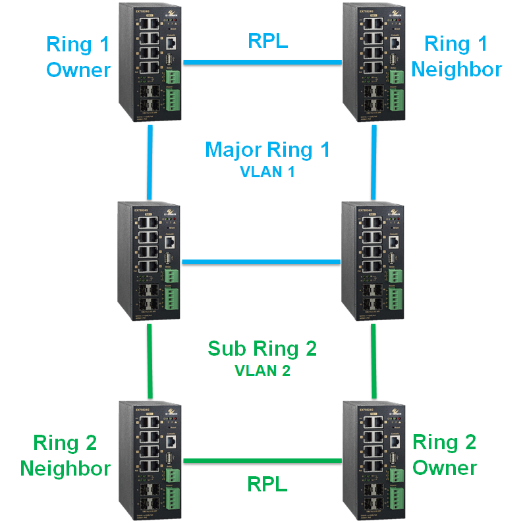
In addition, ERPS supports various advanced topology designs:- Single Ring Topology: The most basic ERPS architecture, suitable for small enterprises or data centers.
- Multiple Ring Topology: Enables the coexistence of multiple independent rings, enhancing redundancy and flexibility—ideal for applications such as large-scale industrial facilities or intelligent transportation systems.
- Load-Balanced Ring Topology: Implements traffic distribution mechanisms to achieve link load balancing, thereby improving performance and availability.
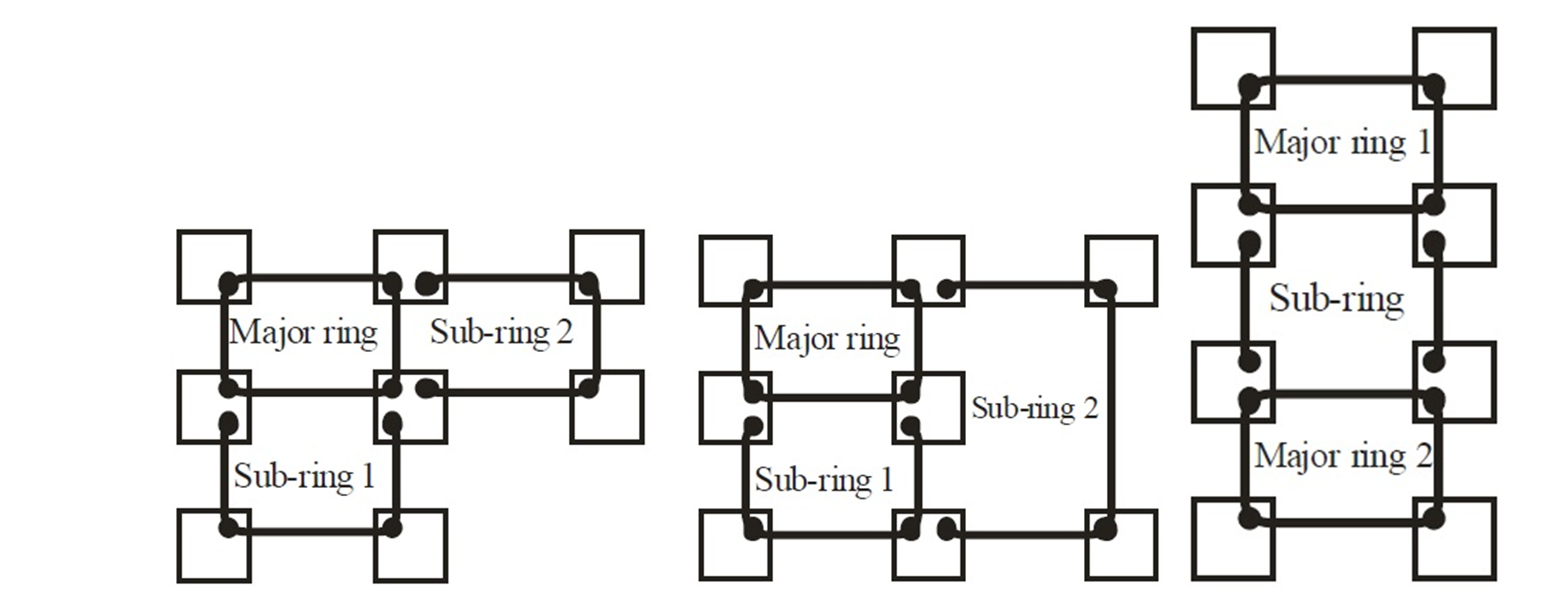 These topology designs can be flexibly combined based on actual deployment requirements, offering a highly reliable, scalable, and efficient network redundancy solution.
These topology designs can be flexibly combined based on actual deployment requirements, offering a highly reliable, scalable, and efficient network redundancy solution.Features and Advantages
ERPS is designed with a combination of high performance and standardized protocol mechanisms, offering the following key technical benefits:- Fast-Recovery and Convergence
ERPS utilizes the R-APS protocol for real-time monitoring and automatic switching. Upon detecting a link or node failure, traffic can be rerouted within 50 milliseconds, minimizing packet loss and reducing the risk of service disruption. - Loop-Protection and Stable-Transmission
To prevent loops and broadcast storms in ring topologies, ERPS blocks specific ports using the Ring Protection Link (RPL) mechanism. It also leverages VLAN-based traffic isolation to ensure stable and secure data transmission. - Standardization and Interoperability
ERPS supports interoperability between switches of different brands, thus reducing deployment and integration costs. This enables your network deployment to adapt to the use of multi-vendor switch equipment. - Flexible Topology Support
ERPS supports diverse ring topologies with multi-instance and VLAN separation, enabling traffic isolation and independent operation. G.8032 v2 adds support for multi-ring and ladder topologies, enhancing deployment flexibility.
- Fast-Recovery and Convergence
ERPS vs. RSTP
ERPS offers clear advantages in convergence speed, topology flexibility, recovery modes, and management capabilities, making it a preferred choice for modern, high-availability networks.
| Protocol | Key Features | Use Cases | Limitations |
|---|---|---|---|
| ERPS |
|
|
|
| RSTP |
|
|
|
Application Scenarios and Deployment
ERPS is widely adopted in environments requiring high network stability and rapid recovery, including:
- Smart Cities: Deployed in traffic signals, surveillance cameras, smart streetlights, and environmental sensors. Main rings follow major roads, while sub-rings connect intersection devices, ensuring uninterrupted data flow even during link failures.
- Industrial Automation: Connects PLCs, sensors, and control systems in a resilient ring topology. Enables automatic failover to backup paths, ensuring stable production operations.
- Intelligent Transportation: Main rings run along highways or railways, linking toll stations, monitoring points, and traffic detectors. Virtual channels enable cross-ring communication for improved availability and management.
- Data Centers: Uses single or sub-ring topologies to ensure high-speed data exchange and fast recovery.
- Smart Grids: Employs multi-ring and load-balanced topologies to guarantee real-time monitoring and secure control of power systems.
EtherWAN Industrial Managed Ethernet Switch with ERPS Support
EtherWAN’s industrial-grade managed Ethernet switches support ERPS (Ethernet Ring Protection Switching), enabling seamless data transmission and rapid link recovery. Designed for high-availability applications such as smart factories, industrial automation, and traffic surveillance, EtherWAN’s ERPS solution delivers fast recovery, flexible deployment, and robust interoperability—making it an ideal choice for mission-critical networks.
Key Features:
- Compliant with ITU-T G.8032 ERPS v2, supporting various topologies including single ring, major ring, sub-ring, and interconnected ring structures.
- Supports Revertive and Non-Revertive modes, along with manual switching for flexible management and fault simulation testing.
- Prevents network loops and broadcast storms in ring topologies through intelligent port blocking mechanisms.
- Enables sub-50ms network recovery, minimizing packet loss during link or node failures.
- Interoperable with multi-vendor devices, allowing seamless ERPS operation across heterogeneous network environments.
⭐EX78900G Series
In addition to supporting ERPS functionality, the EX78900G series offers intuitive port access to simplify cabling installation and maintenance, effectively addressing space constraints in cabinet environments. With user-friendly port layout and management, it ensures a more efficient and streamlined user experience.

EX78924G
| 8-port GbE |
| 8-port supports PoE++ |
| 90W PoE per port |
| 4-port 100/1G/2.5G SFP |
| 480W |
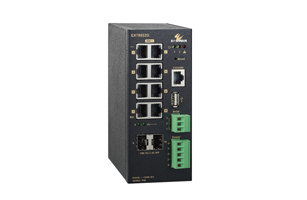
EX78922G
| 8-port GbE |
| 8-port supports PoE++ |
| 90W PoE per port |
| 2-port 100/1G/2.5G SFP |
| 480W |
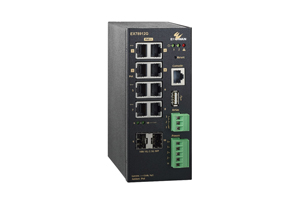
EX78912G
| 8-port GbE |
| 4-port supports PoE++ |
| 90W PoE per port |
| 2-port 100/1G/2.5G SFP |
| 240W |
⭐EG97023 Series
12-port 10 Gigabit and 8-port Gigabit Hardened Managed Layer 3 Switch
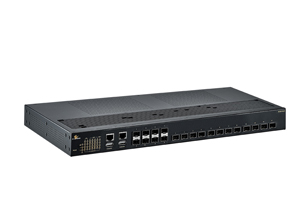
EG97023 Series
| 20 port GbE |
| EN50121-4 |
| 1G / 10G Dual-rate SFP+ |
| L3 |
| - 40 to 75°C |